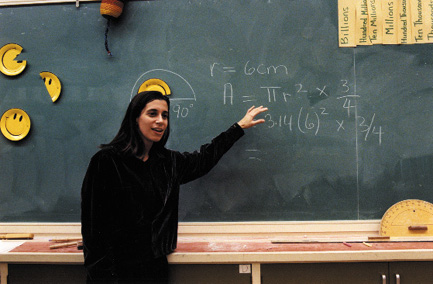Applications
to teacher education programs have dropped substantially for 2001
"This decline is a surprise and cause for concern for the College," said College Registrar and Chief Executive Officer Joe Atkinson. "It comes at a time when we are facing an acute teacher shortage and there are excellent job opportunities in teaching. And the shortage of teachers in Ontario is not just a blip. We’ll have to deal with it for 10 years." "The U.S. and other countries are facing a similar shortage as well, placing Ontario schools boards in tough competition to hire teachers. U.S. boards are very aggressive in recruiting Ontario teachers and are offering them very attractive incentives." Teacher education programs will continue to benefit from a pool of highly qualified candidates next year despite the decline, as there are still a lot more applicants than spaces available. However, aside from the overall decline in interest, several developments are generating more concern. Applications to French-language programs have virtually collapsed. First choice applications for Primaire/Moyen dropped 33 per cent, Moyen/Intermédiaire fell 60 per cent and Intermédiaire/Supérieur is off 53 per cent. In total, first choice applications are down to 306 for 2001, 37 per cent below the total of 483 actually admitted to programs in 2000. First choice applications for several French-language Intermediate-Senior teaching subjects are especially worrisome. Physics is the first choice for first or second teaching subject for only two applicants in all of Ontario, computer science for three, mathematics for eight and chemistry for 11 applicants. Even if all of the applicants are qualified, accepted and follow through on their enrolment in these subjects this year, the supply line for francophone replacement teachers in these teaching subjects is clearly inadequate. In English Intermediate-Senior subjects, there is a 27 per cent drop in science subjects and 18 per cent in math. Technological Studies applications fell 21 per cent. These are very worrisome numbers in subjects in which school boards already have great difficulty recruiting. This will be a particular problem if the viable applications in some faculties fall short of what is required to offer the teaching subject this year. The drop in the number of applications is particularly disappointing in light of a study by the Ontario Universities Application Centre that shows that 95 per cent of Ontario graduates in education are employed within six months after graduation and 99 per cent within two years. "We’re extremely preoccupied with the shortages, particularly because there seems to be a declining interest in teaching. We have 350 spaces here in the faculty with only 290 students attending," said Laurier Busque, director of the one-year teacher education program at the University of Ottawa. "In spite of all our efforts the indicators are poor. Potential candidates are being drawn to other fields, we’re getting competition from other areas. Now it’s an interesting and stimulating challenge for the domain of teaching, we’re having to learn how to face social change. "I don’t have the precise numbers, but we always knew a lot of teaching candidates were the sons and daughters of teachers. It was a real factor, but I think you’ll find that isn’t happening anymore. I had one student who dropped out in the spring. His father, who was a teacher, discouraged him away from the field." The fading interest in the profession reinforces the College’s call (Professionally Speaking, March 2000) for the government to take a leadership role in implementing key recommendations made by the Minister’s task force on teacher shortage. The task force created by then-Education Minister Dave Johnson stressed the need for improved information and data management, communications and outreach plans, support for teacher education programs and incentives. Government funding for spaces in teacher education programs increased from 5,500 in 1999 to 6,000 spaces in 2000-2001 and 6,500 spaces from 2001-2002 to 2003-2004. The College estimated that 7,000 spaces were needed starting in 1999-2000 to compensate for the massive retirement of teachers. A number of factors may explain why applications to teacher education programs have fizzled. The strong economy allows the private sector to offer attractive salaries and opportunities for growth that the school system can hardly match. That is particularly true in areas where the teacher shortage is most acute – Computer Science and Mathematics, for example. As well, students may be reluctant to stay in university to get their teacher education degree when the private sector has openings waiting for them. An increasing number of universities in border states have also developed programs specifically geared to attract Ontario students. The College is concerned that some very capable and highly motivated Ontario students may apply directly to a U.S. university because they can’t get into the program of their choice in Ontario. After graduation, these students may very well be offered jobs south of the border and not return to Ontario. "All education stakeholders and the government must come together to restore interest in the profession and ensure that Ontario students can learn from a qualified teacher in every classroom in Ontario," said College Registrar Joe Atkinson. "We’re already seeing problems across the province with school boards having to rely on unqualified personnel to replace teachers in emergency situations. Some school boards just don’t have enough qualified teachers on their supply list to meet their needs. "We need to identify and understand the problems and find solutions because ultimately, it’s the children and the public who lose if we don’t have qualified teachers in the classroom."
|
||
|
|

